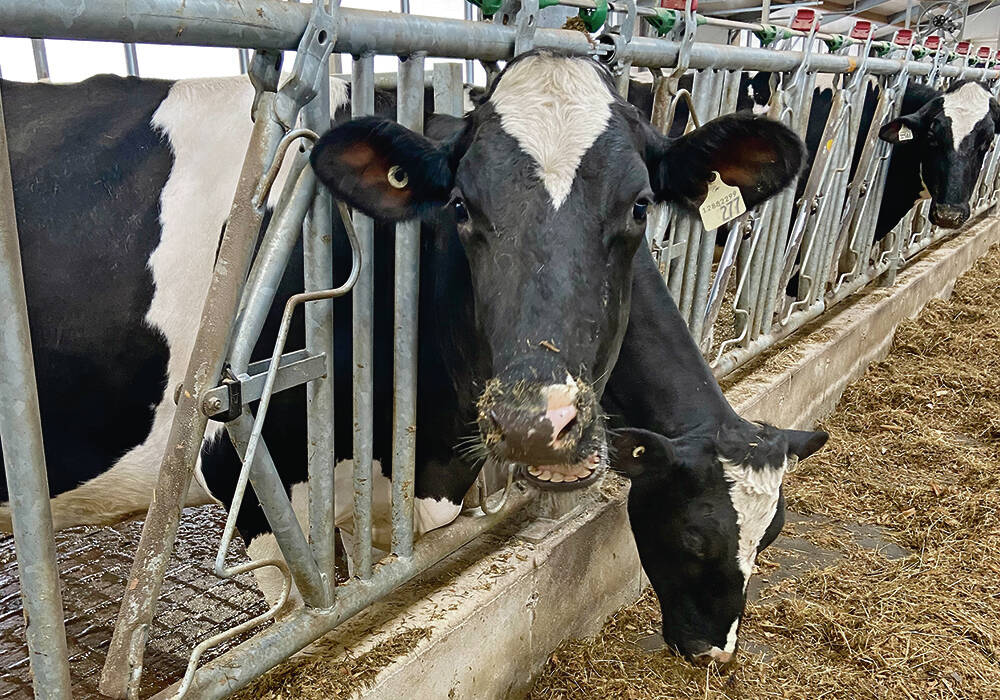A pig disease that’s been around for a century. A new ‘tech cold war’ between Beijing and Washington. A mercurial American president who calls himself “the tariff man.”
These are the unlikely set of factors that are threatening to pummel grain markets — and the incomes of Alberta’s grain producers.

“I am not looking at things optimistically today — maybe it’s just the day — but I do see those that are raising the ’80s and early ’90s as examples and there are a lot of indicators that we’re sort of on the edge of going in that direction,” said Cereals Canada president Cam Dahl.
“Again, if you look back to the ’80s it wasn’t a good time for farmers. Someone asked me the other day if farmers should be concerned, and I said, ‘Yes, farmers should be concerned.’”
It’s a situation that few could have seen coming a year ago.
Last August, African swine fever, a virus that’s been causing occasional outbreaks since the early 1900s, showed up at a Chinese hog farm. It swept the country and now China’s hog herd, the largest in the world, has been reduced by a quarter. And that means demand for the main hog feed, soybean meal, has also plummeted.
Read Also

Alberta Milk opens annual hospital fundraiser
Alberta Milk embarks on holiday season campaign to raise money for Alberta Children’s Hospital Foundation
During the same time, U.S. President Donald Trump has been steadily upping tariffs on Chinese goods — ostensibly in a bid to win back lost factory jobs but mostly, say many analysts, as part of an escalating battle for supremacy in advanced technology. China has responded by sharply cutting imports of American soybeans, with the Trump administration responding late last month with a US$16-billion farm aid package.
After being criticized for favouring soybeans in a $12-billion bailout last year, the new program will give farmers a per-acre payment (which will vary by county). Nevertheless, corn, wheat, and soybean futures all sank following the May 23 announcement because of the expectation farmers would plant more acres to qualify for the government cash.
That’s the sort of fallout that has Dahl worried about a return to the grain subsidy wars of the ’80s and ’90s. And it has other farm groups here worried, too.

“Any time the government intervenes and encourages overproduction, it’s sending a message to American farmers to overproduce for the market,” said Tom Steve, general manager of Alberta Wheat and Alberta Barley.
“There’s an absence of market demand, so they are getting paid to produce, and they will potentially try to maximize yields and production.”
A flood of subsidized soybeans would disrupt the entire edible oil market, including canola — which has also been caught up in the U.S.-China trade war.
“If the American farmer overproduces, then we end up with a surplus of soybeans in the market and a surplus of soybean oil and that weighs on the marketplace,” said Ward Toma, general manager of the Alberta Canola Producers Commission. “That messes up market signals and no one knows what they should be doing from a market standpoint.”
‘Too much grain?’
Right now, producers in Alberta are more concerned about a lack of moisture rather than the global trade situation, and no one is panicking just yet, said Steve.
“A lot of sabre-rattling between China and the U.S. could be part of the negotiation. We hope it is, and that finally they will resolve their differences,” he said.
Alberta farmers are just wondering what is going to happen, added Toma.

“It could all blow over tomorrow when the president tweets something,” he said.
A resolution to the trade war would likely settle down markets, but may not bring a quick return to better times. The reason? Production is rising faster than demand.
For example, the U.S. Department of Agriculture is forecasting world wheat production to increase by 38.5 million tonnes this year but global trade to increase by only 6.7 million tonnes.
“Foreign supplies are projected to increase 38.5 million tonnes to 966.4 million as all of the major wheat exporters (Argentina, Australia, Canada, EU, Russia, and Ukraine) are expected to have higher production for 2019-20,” the USDA said in a May 10 report.
While the U.S.-China trade dispute isn’t helping, the real problem is that supply is exceeding demand, said University of Saskatchewan agricultural economist Richard Gray.
“If one set of countries puts a set of tariffs on the other it’s not a big deal,” said Gray. “But if there’s too much grain in the world the whole price regime comes down and that’s where we’re at. That’s where we were in the ’80s and early ’90s as well.”
Calls for farm aid
That era was defined by EU and American subsidies, which in turn led to farm support payments here to help producers battered by low prices.
And calls for federal help are already being made, including one in mid-May from the Grain Farmers of Ontario, which wants Ottawa to create a fund so that grain producers are protected from losses during global trade disputes.
“A trade war fund needs to be established by the Canadian government to protect Ontario grain and oilseed farmers from political decisions outside their control,” said Markus Haerle, chair of the Ontario farm group. “The U.S. is protecting its farmers and we need the Canadian government to protect our farmer members from trade disputes that have impacts on markets and distort prices.”
Meanwhile, the Grain Growers of Canada wants changes to both AgriStability (specifically, coverage for margin losses below 85 per cent and removal of the reference margin limit) and the cash advance program (specifically, having the $500,000 interest-free portion apply to other crops, not just canola).
“The time has come for the Canadian government to aggressively defend the interests of Canada’s agriculture sector in China and around the world,” said Grain Growers chair Jeff Nielsen, who farms near Olds. “This is a non-partisan issue and Canadian farmers need government support to ensure that we are well positioned to weather this storm.”
Disrupted markets
But anything that encourages overproduction of a commodity just drives prices down further, said Steve.
“The futures market would see that there is too much corn, too much wheat, and too much soybeans in the system and so it would have a negative effect on prices in my estimation,” he said.
Steve said he would prefer to see a negotiated end to the trade war, including China’s ban of Canada’s canola seed imports over the arrest of Huawei executive Meng Wanzhou (who the U.S. wants to extradite). The loss of Canada’s biggest buyer of canola seed has Agriculture and Agri-Food Canada predicting that exports could fall to just eight million tonnes this crop year — versus 9.3 million in the marketing year ending on July 31 and 10.7 million in 2017-18.
Beijing’s displeasure with Canada also has Chinese buyers shunning our soybeans and pork, noted Steve.
That’s another example of how government actions disrupt markets, he added.
“The ultimate solution is to have open trade and open markets,” said Steve. “If we can’t do that, in some cases, governments start to legislate policies that perpetuate the problem.”
– With files from staff and MarketsFarm
















